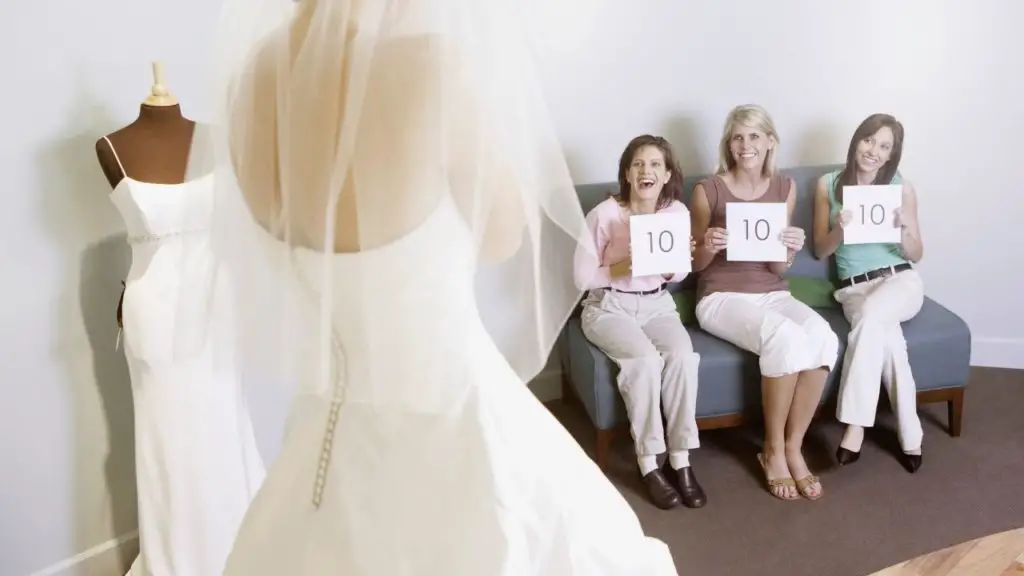If somebody asked you at the age of 6, “What actual finger does a wedding ring belong on?” you likely already knew the answer. It is fairly common for the majority of people, especially in the U.S., to don their wedding ring on their left finger. However, why wedding rings on left hand? And do grooms and brides absolutely need to? Here, we discuss the history behind left-hand ring placement, as well as whether you should follow this tradition.
In addition, we have gone above and beyond and also revealed the customs behind promise rings and engagement rings. Keep in mind that as it’ll come to wedding subjects, we’re always around to lend you a helping hand!
Why Wedding Rings on Left Hand? The Origin and Tradition That Everyone Follows
The history of why a wedding band is worn on a left hand may be tracked to ancient times. In that age, the Romans thought their vein inside the ring finger on the left hand directly ran to a person’s heart. Due to that belief, they referred to this vein as the vein of love or “vena amoris.” In order to solidify a union that is based upon love, naturally, they would put the ring on this finger which was home to the vein of love in order to indicate the romance the married couple share.
A really cute physical representation of 2 hearts being connected, right? Our modern knowledge of biology, unfortunately, implies that all fingers have vein connections to your heart. So, forget science! If you need to assign the 4th finger vein from the right on your left hand as the most unique of veins, the more power to you!
 Conversely, you are welcome to wear the wedding band on your right hand. In doing that, you would be following the same example of the majority of northern and central European couples.
Conversely, you are welcome to wear the wedding band on your right hand. In doing that, you would be following the same example of the majority of northern and central European couples.
That list involves:
• Ukraine
• Bulgaria
• Latvia
• Russia
• Germany
• Belgium (some regions)
• Poland
• Denmark
• Austria
• Norway
Plus, while contemporary couples in Greece who live in Western areas oftentimes slip rings upon their left, Greek grooms and brides historically have donned right-handed rings. Also, Orthodox Christians traditionally wore wedding bands on their right.
Inside India, the left hand was, at one time, considered both lucky and unclean; therefore, rings were worn on their right. However, these days, either hand may house wedding baubles.
The Engagement Ring
As Western cultures accepted the aforementioned old wives’ tale to be a fact, the newly engaged also have taken to wearing an engagement band on the left ring finger. Most of the folks in Europe who opt to don their rings on the right hand’s wedding band finger, interestingly, still don their engagement ring on their left then switch it over.
Our fiancée friends and fiancee’s over in Brazil and Colombia frequently don wedding bands as engagement bands on the right hands, and after finishing their vows, move rings to their left hand. In the Netherlands and in Germany, they might do the exact opposite — positioning their engagement rings on the left hand then wedding rings on their right.
These days, particularly in same sex marriages, males have started donning engagement rings. According to GayWeddings.com, sometimes same-sex couples opt to utilize their wedding ring finger on their right hand for wedding and engagement bands since it is similar, yet not the same as heterosexual practices. However, other people embrace the conventional practice of utilizing the wedding ring finger of their left hand. We also have known of those who’ve used additional fingers; some have selected the same finger and still others have each chosen a finger then not matched.
Brides in Sweden may wear special wedding band sets, comprised of the ring of motherhood, wedding band, and an engagement ring.
If you have made the decision to wear both rings on the exact same finger, you probably now are thinking about stacking. Are you prepared to insert an additional sentimental, sweet explanation here?
Married couples traditionally sport their wedding rings nearest to their hearts, which means that they are the bottom stack, underneath the engagement band, and pushed toward the base of the knuckle. While this may not be why wedding rings on left hand it can certainly explain a lot. If you are interested in honoring this on your wedding day, the most sought-after strategy includes switching over the engagement ring over to your right hand directly before going down the aisle.
Now your partner-to-be may slide your wedding band directly up your left finger, and it’s possible to then top it back off with your engagement ring right there during the ceremony, or later. There are some brides who, either trying to save themselves some trouble or reenact some other “marriage bond” metaphor, have their wedding rings and engagement bands soldered together into a single piece of jewelry.
Promise Ring
The “promises” of promise rings take on several different forms. Here, commitment is the idea, yet whether this commitment includes abstinence until marriage, forever, an upcoming engagement, or simply the immediate future, varies. However, in any case, now there is an indicator, a couple of steps up from a class ring from high school, to the outside world.
Also, the practice of a promise ring arguably could be tracked back to ancient times in Rome, as “betrothal rings” were made from a plain iron. Next in history, came England’s “posie rings” in the 15th through 17th centuries. At times, the round tokens contained brief love poem inscriptions on their outsides or insides.
As aforementioned, the contemporary ring’s design and purpose spans the spectrum. According to a post from EngravedStyle.com, the most typical sentiments that are signified by promise rings these days include:
• Personal Promises (A reminder to wearers of promises or commitments she/he made to personal causes or goals)
• Friendship
• Exclusive Monogamy
• Chastity/Purity Purposes
• Pre-engagement
“Now, upon which finger will the promise ring be on?” you are asking. There isn’t any hard and fast rule, as always. However, one line of thinking might be that whatever finger you have designated as the “wedding and/or engagement band finger” holds the highest significance. Is the promise band commitment worthy of the said location and are you okay with it being more than often mistaken for a different kind of ring? If you are not, pick some other digit.
No Ring
So, we covered the why wedding rings on left hand topic. Lastly, let us go over donning the bands in the first place. It’s yet another circumstance where it is entirely up to the preferences of you, as well as your partner. Rings are an excellent method of symbolizing a union, and they have those “no beginning, no end” and “endless” circle metaphors which makes a strong case for them which we’ve read about on many wedding blog we’ve seen.. However, you have options! You only might want an engagement ring; not a band. Maybe you would rather use another jewelry piece, such as bracelets or necklaces, as an ornament for a union.
Or if you are committed to an expression of self-sacrifice and permeance, some couples might make like some celebrities and obtain a tattoo on their fingers that signify the marriage. However, know that in this case, you had better be confident about your designation of the hand/finger/vein which is going to show your display of commitment when it is no longer a simplistic slip on, slip off type of thing!

Cynthia Pate is a passionate writer and wedding enthusiast, dedicated to helping couples create their dream celebrations. With years of experience in the wedding industry, Cynthia has developed a deep understanding of the latest trends, timeless traditions, and unique ideas that make every wedding special. Her articles cover a wide range of topics, from planning and decor to etiquette and fashion, always with the goal of providing practical advice and inspiring ideas. When she’s not writing about all things wedding-related, Cynthia enjoys exploring new destinations, trying out local cuisines, and spending time with her family and friends.




